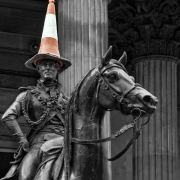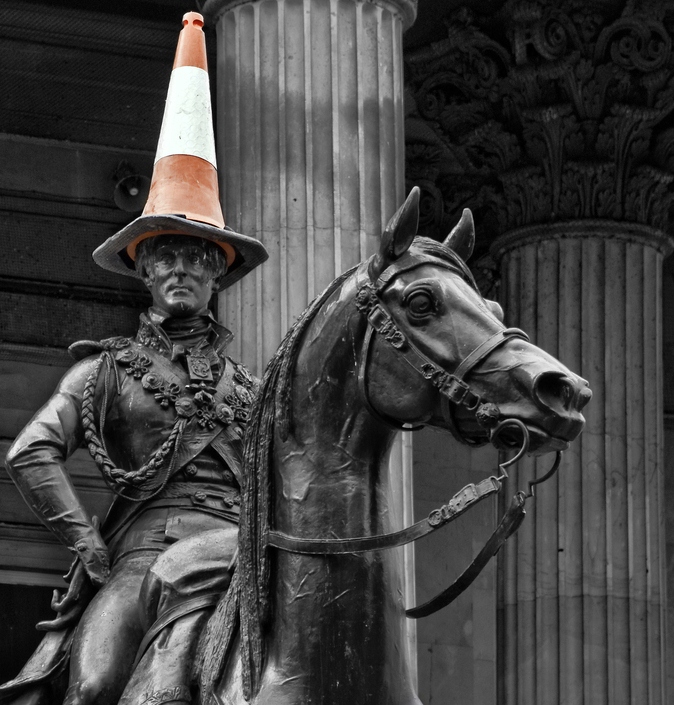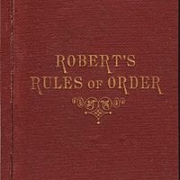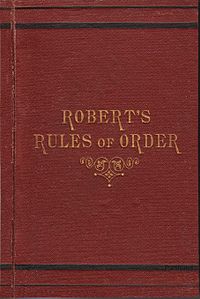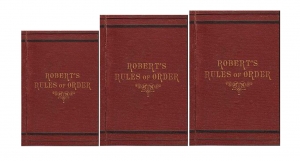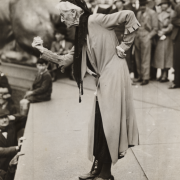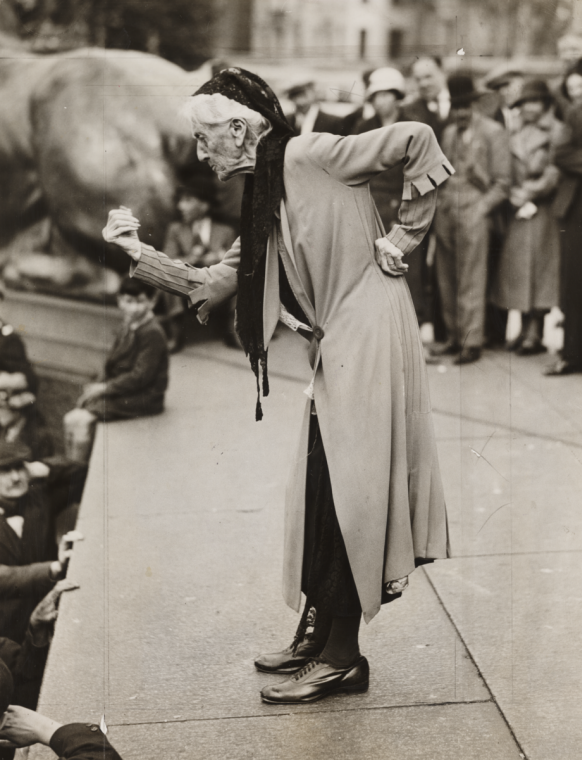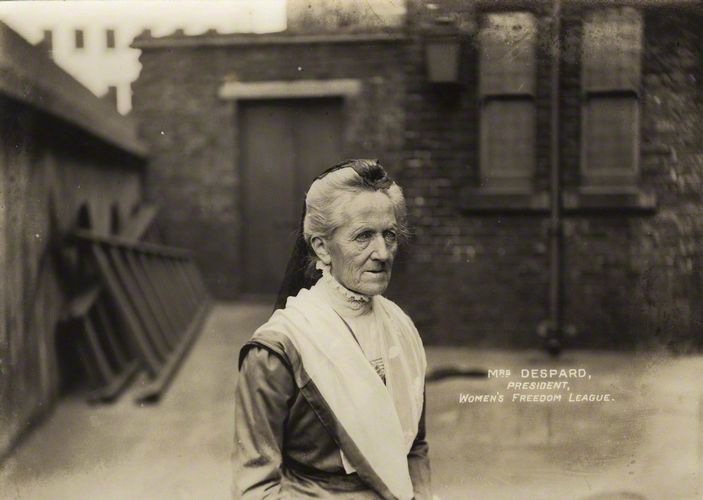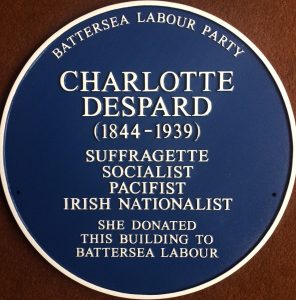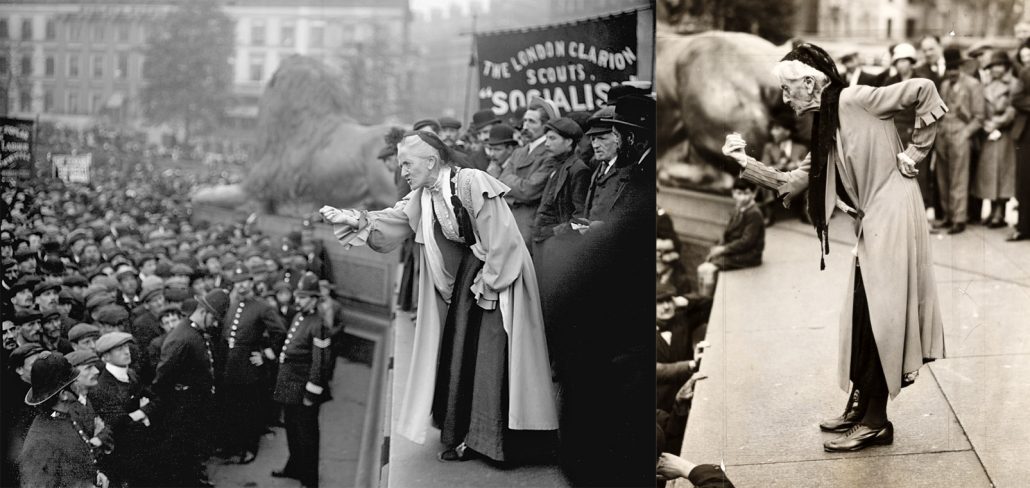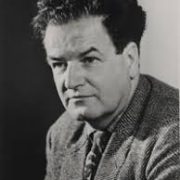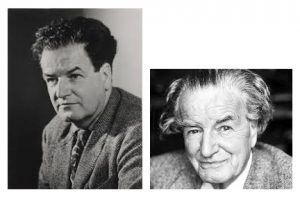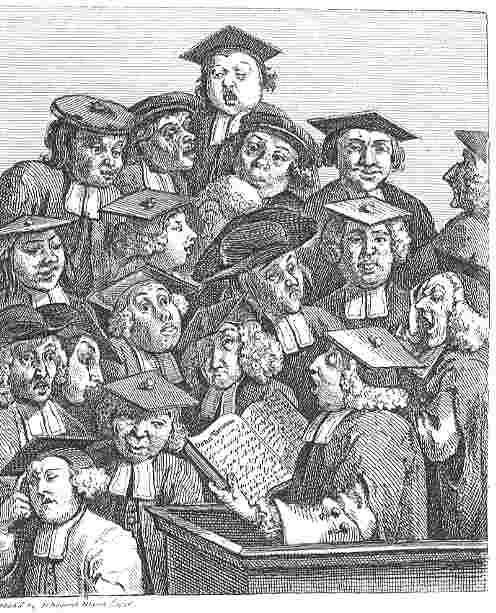MONTHLY BLOG 105, Researchers, Do Your Ideas Have Impact? A Critique of Short-Term Impact Assessments
If citing, please kindly acknowledge copyright © Penelope J. Corfield (2019)

|
Clenched Fist |
Researchers, do your ideas have impact? Does your work produce ‘an effect on, change or benefit to the economy, society, culture, public policy or services, health, the environment or quality of life, beyond academia’? Since 2014, that question has been addressed to all research-active UK academics during the assessments for the Research Excellence Framework (REF), which is the new ‘improved’ name for the older Research Assessment Exercise (RAE).1
From its first proposal, however, and long before implementation, the Impact Agenda has proved controversial.2 Each academic is asked to produce for assessment, within a specified timespan (usually seven years), four items of published research. These contributions may be long or short, major or minor. But, in the unlovely terminology of the assessment world, each one is termed a ‘Unit of Output’ and is marked separately. Then the results can be tallied for each researcher, for each Department or Faculty, and for each University. The process is mechanistic, putting the delivery of quantity ahead of quality. And now the REF’s whistle demands demonstrable civic ‘impact’ as well.
These changes add to the complexities of an already intricate and unduly time-consuming assessment process. But ‘Impact’ certainly sounds great. It’s punchy, powerful: Pow! When hearing criticisms of this requirement, people are prone to protest: ‘But surely you want your research to have impact?’ To which the answer is clearly ‘Yes’. No-one wants to be irrelevant and ignored.
However, much depends upon the definition of impact – and whether it is appropriate to expect measurable impact from each individual Unit of Output. Counting/assessing each individual tree is a methodology that will serve only to obscure sight of the entire forest. And will hamper its future growth.
In some cases, to be sure, immediate impact can be readily demonstrated. A historian working on a popular topic can display new results in a special exhibition, assuming that provision is made for the time and organisational effort required. Attendance figures can then be tallied and appreciative visitors’ comments logged. (Fortunately, people who make an effort to attend an exhibition usually reply ‘Yes’ when asked ‘Did you learn something new?’). Bingo. The virtuous circle is closed: new research → an innovative exhibition → gratified and informed members of the public → relieved University administrators → happy politicians and voters.
Yet not all research topics are suitable to generate, within the timespan of the research assessment cycle, the exhibitions, TV programmes, radio interviews, Twitterstorms, applied welfare programmes, environmental improvements, or any of the other multifarious means of bringing the subject to public attention and benefit.
The current approach focuses upon the short-term and upon the first applications of knowledge rather than upon the long-term and the often indirect slow-fuse combustion effects of innovative research. It fails to register that new ideas do not automatically have instant success. Some of the greatest innovations take time – sometimes a very long time – to become appreciated even by fellow researchers, let alone by the general public. Moreover, in many research fields, there has to be scope for ‘trial and error’. Short-term failures are part of the price of innovation for ultimate long-term gain. Unsurprisingly, therefore, the history of science and technology contains many examples of wrong turnings and mistakes, along the pathways to improvement.3
An Einstein, challenging the research fundamentals of his subject, would get short shrift in today’s assessment world. It took 15 years between the first publication of his paper on Special Relativity in 1905 and the wider scientific acceptance of his theory, once his predictions were confirmed experimentally. And it has taken another hundred years for the full scientific and cultural applications of the core concept to become both applied and absorbed.4 But even then, some of Einstein’s later ideas, in search of a Unified Field Theory to embrace analytically all the fundamental forces of nature, have not (yet) been accepted by his fellow scientists.5 Even a towering genius can err.
Knowledge is a fluid and ever-debated resource which has many different applications over time. Applied subjects (such as engineering; medicine; architecture; public health) are much more likely to have detectable and direct ‘impact’, although those fields also require time for development. ‘Pure’ or theoretical subjects (like mathematics), meanwhile, are more likely to achieve their effects indirectly. Yet technology and the sciences – let alone many other aspects of life – could not thrive without the calculative powers of mathematics, as the unspoken language of science. Moreover, it is not unknown for advances in ‘pure’ mathematics, which have no apparent immediate use, to become crucial many years subsequently. (An example is the role of abstract Number Theory for the later development of both cryptography and digital computing).6
Hence the Impact Agenda is alarmingly short-termist in its formulation. It is liable to discourage blue skies innovation and originality, in the haste to produce the required volume of output with proven impact.
It is also fundamentally wrong that the assessment formula precludes the contribution of research to teaching and vice versa. Historically, the proud boast of the Universities has been the integral link between both those activities. Academics are not just transmitting current knowhow to the next generation of students but they (with the stimulus and often the direct cooperation of their students) are simultaneously working to expand, refine, debate, develop and apply the entire corpus of knowledge itself. Moreover, they are undertaking these processes within an international framework of shared endeavour. This comment does not imply, by the way, that all knowledge is originally derived from academics. It comes indeed from multiple human resources, the unlearned as well as learned. Yet increasingly it is the research Universities which play a leading role in collecting, systematising, testing, critiquing, applying, developing and advancing the entire corpus of human knowledge, which provides the essential firepower for today’s economies and societies.7
These considerations make the current Impact Agenda all the more disappointing. It ignores the combined impact of research upon teaching, and vice versa. It privileges ‘applied’ over ‘pure’ knowledge. It prefers instant contributions over long-term development. It discourages innovation, sharing and cooperation. And it entirely ignores the international context of knowledge development and its transmission. Instead, it encourages researchers to break down their output into bite-sized chunks; to be risk-averse; to try for crowd-pleasers; and to feel harried and unloved, as all sectors of the educational world are supposed to compete endlessly against one another.
No one gains from warped assessment systems. Instead, everyone loses, as civic trust is eroded. Accountability is an entirely ‘good thing’. But only when done intelligently and without discouraging innovation. ‘Trial and error’ contains the possibility of error, for the greater good. So the quest for instant and local impact should not be overdone. True impact entails a degree of adventure, which should be figured into the system. To repeat a dictum which is commonly attributed to Einstein (because it summarises his known viewpoint), original research requires an element of uncertainty: ‘If we knew what it was we were doing, it would not be called “research”, would it?’8
ENDNOTES:
1 See The Research Excellence Framework: Diversity, Collaboration, Impact Criteria, and Preparing for Open Access (Westminster, 2019); and historical context in https://en.wikipedia.org/wiki/Research_Assessment_Exercise.
2 See e.g. B.R. Martin, ‘The Research Excellence Framework and the “Impact Agenda”: Are We Creating a Frankenstein Monster?’ Research Evaluation, 20 (Sept. 2011), pp. 247-54; and other contributions in same issue.
3 S. Firestein, Failure: Why Science is So Successful (Oxford, 2015); [History of Science Congress Papers], Failed Innovations: Symposium (1992).
4 See P.C.W. Davies, About Time: Einstein’s Unfinished Revolution (New York, 1995); L.P. Williams (ed.), Relativity Theory: Its Origins and Impact on Modern Thought (Chichester, 1968); C. Christodoulides, The Special Theory of Relativity: Foundations, Theory, Verification, Applications (2016).
5 F. Finster and others (eds), Quantum Field Theory and Gravity: Conceptual and Mathematical Advances in the Search for a Unified Framework (Basel, 2012).
6 M.R. Schroeder, Number Theory in Science and Communications: With Applications in Cryptography, Physics, Biology, Digital Information and Computing (Berlin, 2008).
7 J. Mokyr, The Gifts of Athena: Historical Origins of the Knowledge Economy (Princeton, 2002); A. Valero and J. van Reenen, ‘The Economic Impact of Universities: Evidence from Across the Globe’ (CEP Discussion Paper No. 1444, 2016), in Vox: https://voxeu.org/article/how-universities-boost-economic-growth
8 For the common attribution and its uncertainty, see [D. Hirshman], ‘Adventures in Fact-Checking: Einstein Quote Edition’, https://asociologist.com/2010/09/04/adventures-in-fact-checking-einstein-quote-edition/
For further discussion, see Twitter
To read other discussion-points, please click here
To download Monthly Blog 105 please click here


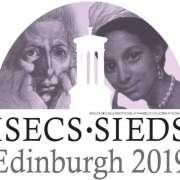
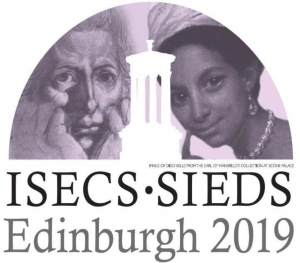 Collectively, the 15th International Congress on the Enlightenment (ICE), focusing upon Enlightenment Identities, was a huge triumph. For five days in Edinburgh in July 2019 some 2000 international participants rushed from event to event. There were not only 477 learned panel presentations and five great plenaries but also sundry conducted walks, coach tours to special venues, a grand reception, a superb concert, a pub quiz, and an evening of energetic Highland dancing. So much was happening that heads spun, and not just from the jovial Edinburgh hospitality.
Collectively, the 15th International Congress on the Enlightenment (ICE), focusing upon Enlightenment Identities, was a huge triumph. For five days in Edinburgh in July 2019 some 2000 international participants rushed from event to event. There were not only 477 learned panel presentations and five great plenaries but also sundry conducted walks, coach tours to special venues, a grand reception, a superb concert, a pub quiz, and an evening of energetic Highland dancing. So much was happening that heads spun, and not just from the jovial Edinburgh hospitality.


